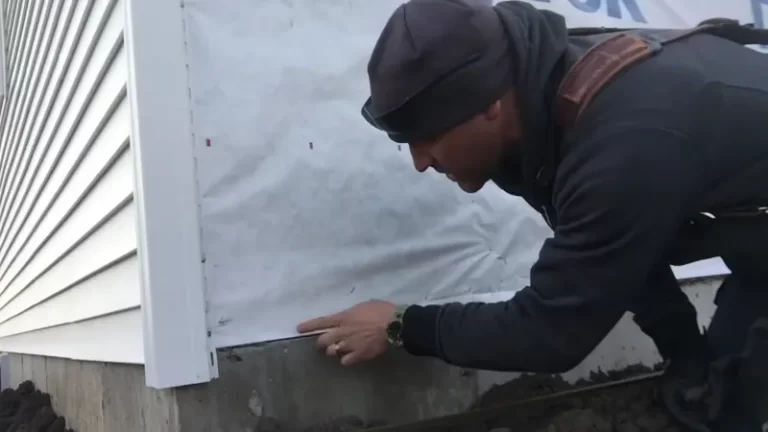Raising a First Floor Ceiling? Don’t Touch a Thing Until You Read This
That persistent feeling of being cramped in your own home is often a direct result of low ceilings. Standard eight-foot ceilings, once the norm, can make a space feel dated and confined. For owners of two-story houses, the dream of a grand, airy first floor often seems impossible, with the second story sitting directly overhead like an immovable obstacle. This isn’t just a cosmetic issue; it’s a fundamental structural puzzle.
Raising the ceiling on the first floor of a two-story home is one of the most complex and structurally significant renovations you can undertake. It’s far more involved than simply removing drywall. You are dealing with the literal support system for the floor above, a complex web of joists, beams, plumbing, wiring, and ductwork that keeps your home functional and safe. Attempting this without a deep understanding of the process can lead to catastrophic consequences for your home’s integrity.
You'll Learn About
The Heavy Truth About Low Ceilings in a Two-Story Home
The core challenge is straightforward: the ceiling of your first floor is also the floor of your second story. Every floor joist you see is critical for holding up everything above it—from furniture and people to the walls themselves. Simply cutting into this system without a meticulously engineered plan is out of the question. This is where the dream meets the stark reality of physics and construction law.
Before any work begins, it is paramount to understand that this is not a DIY project. The process requires a team of certified professionals, including a structural engineer, an architect, and an experienced general contractor. They will work together to assess feasibility, create safe and compliant plans, and execute the project without compromising your home’s structure.
Can You Actually Raise the Ceiling on the First Floor?
Yes, it is physically possible, but it is an intensive and expensive undertaking. The methods for achieving more vertical space on the first floor range from creating clever illusions of height to undertaking a massive structural overhaul. The right choice depends on your budget, your home’s construction, and your tolerance for major disruption.
Forget the idea of simply “pushing up” the ceiling. The process involves temporarily supporting the entire second floor, removing the existing floor joist system, re-engineering a new, higher floor system, and then reconnecting all the mechanical systems. It’s a construction feat that demands precision at every step.
Method 1: Rerouting and Reclaiming Space (The “Nibbler” Approach)
Sometimes, a few extra inches of height are trapped behind unnecessary soffits or bulkheads. These are often built to hide HVAC ducts, plumbing pipes, or electrical wiring. In some cases, these systems can be rerouted or replaced with more compact alternatives to reclaim that lost space.
A thorough investigation by a contractor can “map” the mechanical systems hidden in your ceiling. It might be possible to move a large duct or replace it with two smaller ones that can be tucked more tightly against the support beams. While this method may only gain you several inches, it can make a noticeable difference in how open the room feels, especially in kitchens and bathrooms.
Method 2: Creating a Tray or Coffered Ceiling
A less invasive, yet highly effective, strategy is to create a tray or coffered ceiling. This involves raising the central portion of the ceiling while leaving the perimeter at its original height. This technique works by recessing the new, higher ceiling plane up between the floor joists of the second story.
This approach still requires careful engineering to ensure the modified joists can carry the load, but it avoids the monumental task of lifting the entire second story. The result is an architectural feature that adds a sense of depth and height without the extreme cost and complexity of a full structural lift. It is an excellent compromise for creating a more dramatic space.
The Ultimate Remodel: Raising the Entire Second Floor System
This is the most complex and expensive method, reserved for homeowners committed to a complete transformation. The process involves temporarily supporting the second-floor walls and structure with an extensive network of shoring posts and beams. Once the second story is secured, the existing first-floor ceiling and second-story floor joists are systematically removed.
New, taller wall studs are installed, or existing walls are extended upwards. A new floor system for the second story is then constructed at the higher elevation. Only after the new structure is fully in place and deemed secure can the temporary supports be removed. This process is slow, meticulous, and requires an empty house for the duration of the work.

The Non-Negotiable Team: Engineer, Architect, and Contractor
Do not attempt any part of this project without professional oversight. A structural engineer’s role is to calculate the loads and design a safe support system. An architect will integrate these structural requirements into a cohesive design that complies with building codes. The general contractor orchestrates the entire process, from demolition to finishing, ensuring every step is executed correctly.
Securing the proper permits is a critical step that cannot be skipped. Your local building authority will need to review and approve the engineered plans before any work can begin. This ensures the project meets safety standards and is properly documented for future home sales.
What About the Second Floor Ceiling? Vaulting into the Attic
Raising the ceiling on the second floor is often a more feasible project because you are typically dealing with attic space and the roof structure, not another living area. The most common method here is to vault the ceiling, removing the flat ceiling joists and exposing the angled underside of the roof rafters.
This project’s viability depends entirely on your home’s roof construction. Homes built with traditional rafters (stick-framing) are often good candidates. However, many modern homes use pre-fabricated trusses, a web-like system of interconnected wood members that cannot be safely altered without an engineer’s redesign.
The Critical Difference: Trusses vs. Rafters
It is vital to determine which system your home has before planning a second-floor ceiling project. Cutting into a truss without a proper engineering plan can compromise the entire roof structure. An engineer must design reinforcements, such as a structural ridge beam and new collar ties, to maintain stability once the original ceiling joists are removed.
A home with stick-built rafters offers more flexibility. The rafters can often be reinforced and new, higher collar ties installed to create a vaulted effect while preserving structural integrity. This is still a job for professionals but is generally less complex than modifying a truss system.
The Hidden Costs No One Talks About
The structural work is only one part of the equation. The final bill for a project of this magnitude can be surprising if you don’t account for all the related expenses. The true cost to raise 8-foot ceilings involves much more than just framing and drywall.
After a major structural change, you may notice cosmetic issues elsewhere. It is not uncommon to see stress cracks or even find that you have nail pops everywhere as the house settles into its new configuration. These cosmetic repairs should be factored into the final budget.
| Cost Component | Description | Estimated Cost Range (Varies Widely) |
|---|---|---|
| Structural Engineer & Architect | Fees for initial assessment, drawings, load calculations, and plans for permits. | $3,000 – $10,000+ |
| Permits | Fees paid to the local building department for plan review and inspections. | $1,000 – $5,000 |
| Labor & Demolition | Includes demolition, temporary shoring, framing, and installation of new structural elements. | $20,000 – $75,000+ |
| Materials | Lumber, engineered beams, steel, hardware, drywall, insulation. | $10,000 – $30,000+ |
| Mechanical Systems Rerouting | HVAC, electrical, and plumbing modifications. | $5,000 – $20,000+ |
| Finishing | Drywall finishing, painting, trim work, and flooring repair. | $5,000 – $15,000+ |
| Contingency Fund | Essential buffer (15-20%) for unexpected issues found during demolition. | $7,000 – $25,000+ |
Beyond the Beams: Critical Systems You Must Consider
A higher ceiling means longer runs for everything that passes through it. All mechanical systems will need to be extended and reconfigured, which adds significant cost and complexity.
HVAC: Ductwork for heating and air conditioning must be removed and reinstalled. This is a good time to assess the system’s efficiency, as a larger room volume may require a more powerful unit to heat and cool effectively. Plumbing: Supply lines are relatively easy to extend, but drain lines (DWV) are more challenging as they require a specific slope to function properly. Electrical: All wiring for lights and outlets in the ceiling must be lengthened and re-run to the new locations, which must be done by a licensed electrician.
These changes can have a domino effect. For instance, raising the ceiling in a kitchen might mean your over range microwave cabinet too low is no longer an issue, but you’ll need a new plan for upper cabinet placement and ventilation.
Are There Alternatives? Creating the Illusion of Height
If the cost and disruption of a structural project are too daunting, there are many design strategies to make a room feel taller. These optical illusions can have a powerful effect at a fraction of the cost.
Vertical Lines: Use vertical stripes on an accent wall, install floor-to-ceiling curtains hung just below the ceiling line, or use tall, narrow bookshelves to draw the eye upward. Color Choices: Painting the ceiling a lighter color than the walls, or even the same color, can blur the transition and make the ceiling feel higher. A high-gloss finish on the ceiling can also help by reflecting light. Low-Profile Furniture: Choosing furniture that sits lower to the ground creates more visible wall space above it, enhancing the sense of verticality. Lighting: Use uplighting from floor lamps or sconces to wash the ceiling in light, making it feel more distant and open.
The Final Verdict: Is Raising Your Ceiling Worth It?
Raising the ceiling in a two-story house is a transformative project that can dramatically improve your home’s comfort, aesthetic, and resale value. The feeling of spaciousness and light in a room with high ceilings is undeniable. However, it is a serious construction project with a price tag to match.
Before you commit, get multiple quotes from reputable contractors and consult with a structural engineer. Understand the full scope of the work, including the costs, the timeline, and the disruption to your life. For some, the final result is a dream come true; for others, the more practical path lies in clever design tricks to create the illusion of space.


